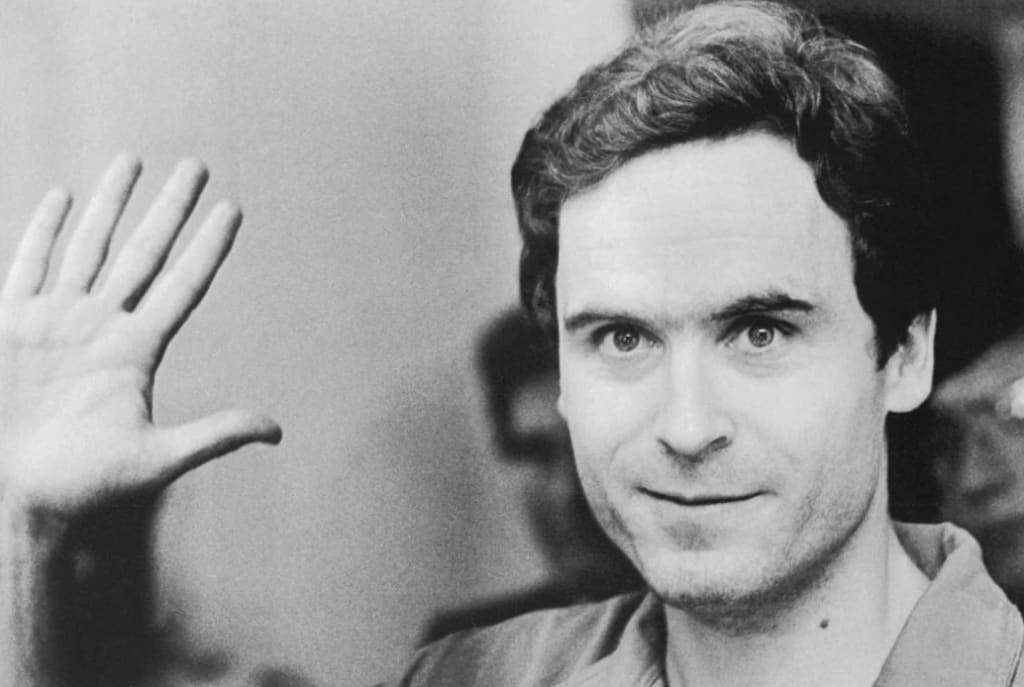Ted Bundy: The Charismatic Monster Behind America’s Most Notorious Crimes
Ted Bundy, one of America’s most notorious serial killers, continues to captivate and horrify the public decades after his crimes. His tale is a chilling blend of charm, deception, and brutality that has left an indelible mark on criminal history.

Ted Bundy, one of America’s most infamous serial killers, remains a figure of morbid fascination and terror. His story is a chilling blend of charisma, cunning, and sheer brutality, making it a grim touchstone in the annals of criminal history. Bundy's ability to appear charming and trustworthy enabled him to lure unsuspecting victims, leaving a trail of heartbreak and horror across the United States during the 1970s.
Born Theodore Robert Bundy on November 24, 1946, in Burlington, Vermont, Bundy’s early life was marked by familial deception and confusion. Raised by his grandparents, he believed his mother to be his sister, a lie that wasn't revealed until later in his life. This revelation, combined with his inability to connect with people on an emotional level, may have sowed the seeds for his later violent behavior. Despite these early signs of turmoil, Bundy managed to project an image of a successful, articulate, and handsome young man.
Bundy's killing spree began in earnest in 1974, and his method of operation became chillingly predictable. He often feigned injury or pretended to be an authority figure to gain his victims' trust. Once isolated, Bundy would overpower and abduct them, ultimately leading to their brutal deaths. His victims were predominantly young women, and his crimes were characterized by their sheer brutality, including rape, bludgeoning, and strangulation. The terror he inflicted was not just in the act but also in the anticipation; he could be anyone, anywhere, at any time.
What set Bundy apart from other serial killers was his intelligence and his ability to manipulate those around him. This was evident in his repeated escapes from custody. The first occurred in 1977 when he jumped from the second-story window of a law library in Aspen, Colorado. He remained at large for six days before being recaptured. Later that year, Bundy escaped again, this time from a jail in Glenwood Springs, Colorado, by sawing through the ceiling of his cell and crawling through the ductwork. His escape led him to Florida, where he continued his spree of terror.
In Florida, Bundy’s crimes reached a horrifying peak. On January 15, 1978, he broke into the Chi Omega sorority house at Florida State University, brutally attacking four women, killing two of them. His spree culminated with the abduction and murder of 12-year-old Kimberly Leach in February 1978. These crimes ultimately led to his capture and final downfall.
Bundy's trial was a media sensation, drawing national attention and transforming him into a macabre celebrity. Despite overwhelming evidence, Bundy maintained his innocence, representing himself in court and using his charm to manipulate the proceedings. His trial was marked by his erratic behavior, which included marriage proposals to a witness and dramatic courtroom outbursts. Nevertheless, he was convicted and sentenced to death in 1979.
Bundy's execution in 1989 marked the end of a saga that had captivated and horrified the nation. Outside Florida State Prison, crowds celebrated his death, reflecting the profound impact his crimes had on the American psyche. However, the fascination with Bundy’s story endures, evidenced by numerous books, documentaries, and films that continue to explore his life and crimes.
The legacy of Ted Bundy is one of fear and fascination. He exploited the trust of his victims, using his appearance and intelligence as weapons. Bundy’s story serves as a stark reminder of the potential for evil to hide behind a veneer of normalcy. His case also had significant legal and social implications, highlighting the need for improved investigative techniques and a better understanding of the psychological profiles of serial killers.
The Ted Bundy story continues to captivate and terrify, a chilling testament to the darkest aspects of human nature. His ability to blend into society while committing heinous acts of violence challenges our perceptions of trust and safety. As we delve into the history of his crimes, we are reminded of the importance of vigilance and the need to recognize that evil can often wear a friendly face. Bundy's story is not just one of a man who committed unspeakable acts, but also a narrative about the fragility of human trust and the profound impact of psychological manipulation. His legacy endures, not just in the annals of crime but in the collective memory of a society that continues to seek understanding and justice in the face of such darkness.
About the Creator
Jane Doe
As a passionate storyteller, I captivate readers with engaging, well-researched articles across genres from criminality and poems to lifestyle and more....
Join me for insights, tips, and narratives that inform and entertain.
Enjoyed the story? Support the Creator.
Subscribe for free to receive all their stories in your feed. You could also pledge your support or give them a one-off tip, letting them know you appreciate their work.






Comments (1)
Thank you for the interesting and delicious content. Follow my stories now.